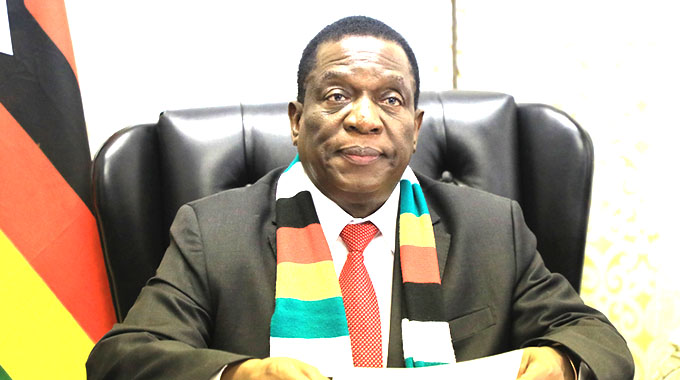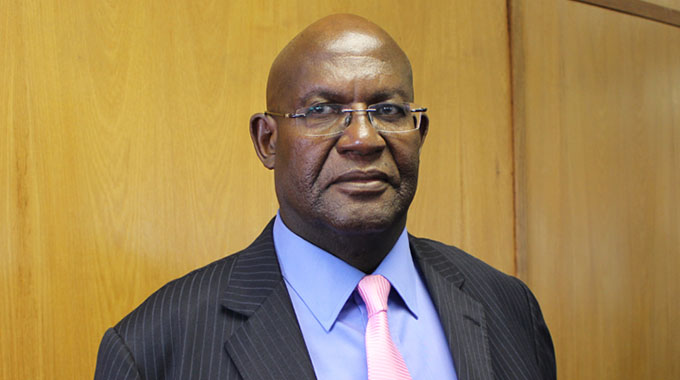Harnessing the youth demographic dividend. . . Why the AU roadmap matters

Roselyn Sachiti Features, Health & Society Editor
ON Saturday June 15, President Mnangagwa’s remarks during the Day of the African Child (DAC) were quite captivating and important especially to the youth demographic. In his speech, the President outlined the paramount role youths play in the country’s development.
He also challenged youths to take up their position as they were masters of their own destiny.
In his remarks, President Mnangagwa also spelt out how Government was also committed to offering equal opportunities for children despite their social standing, including promoting free, compulsory basic education for all children, emphasising that Government would increase incubation hubs and vocational training centres countrywide to “inculcate a culture of innovation, scientific inventions and entrepreneurship” among the young people.
“We are committed to developing creative, innovative young people who create jobs and provide solutions to our daily challenges as a nation.
“I encourage all learners to take advantage of the comprehensive new curriculum to take up studies in new science, technical and engineering fields, as these are essential building blocks for the Zimbabwe of tomorrow,” the President said.
His remarks come at an important time as the African continent has increased efforts to harness the youth demographic dividend.
The youth demographic dividend remains central to realising Africa’s aspiration and economic transformation.
African youth (15-24 years) constitute about 37 percent of the working age population, but account for more than 60 percent of all unemployed people in Africa, according to the African Development Bank (AfDB).
President Mnangagwa’s remarks are a sign of political commitment at the highest level and in line with the AU Roadmap on Harnessing the Demographic Dividend through Investments in Youth.
Most importantly, what President Mnangagwa said is premised on the AU Roadmap, which focuses on four key interconnected pillars that are most critical in increasing investments in youth driving change and setting African countries on the path towards harnessing the demographic dividend.
The four pillars are discuused in detail below:
Pillar 1: Employment and Entrepreneurship
The AU Roadmap states that governments should improve access to credit facilities for youth to establish and operationalise national and regional youth funds to increase young people’s access to business capital.
It also calls on governments to create conducive, political, business, financial and economic environment by developing and effectively implementing policies that promote flexible labour markets, facilitate the development of labour-intensive sectors that can compete globally, and liberalise trade.
“As young people, you must take your position and contribute to the development of our great country. I am always ready to listen to you, our children and young people, with a view to adopting appropriate policies to address your concerns. We are indeed masters of our own destiny and dialogue is the culture of the new Zimbabwe,” President Mnangagwa told thousands of children from around the country who gathered in Harare for the DAC commemorations.
His words are not just mere talk, Zimbabwe has been empowering youths through the Youth Empower Bank, which loans capital for new and existing projects to youths.
The bank, which was launched by Government last year to support various youth initiatives, has to date reached out to more than 6 000 youths with potential to set up viable businesses.
The Empower Bank has disbursed loans worth $1 million out of the $4,1 million that has been set aside for financing young businesses across the country.
Pillar 2: Education and Skills Development
This pillar touches on some critical issues raised by the President on June 15.
The pillar states that improvements in the outcomes of education in Africa will be critical to the continent’s efforts towards harnessing the demographic dividend and serves as one of the most important areas that require strategic investments.
Across Africa and within various policy instruments and studies, some of the key challenges facing the educational system are well documented. These include access, quality, relevance, options for technical and vocational education and training, the need for emphaisis on science and technology, the mismatch between what students learn and the demands for national development and the labour market, high cost of tuition, inadequacy of learning materials etc.
While it is clear there is a need of a skills revolution in Africa (CESA 2016-25), these challenges have to be addressed in a meaningful manner that provides all the key actors and stakeholders from the country to continental level, including Government, the private sector, civil society and youth.
Zimbabwe has put in a lot of work and effort in addressing this by expanding vocational training opportunities for skills acquisition for young people.
Last week in the House of Assembly, Member of Parliament for Mhangura Hon Chinhamo Masango asked the Minister of Youth, Sport, Arts and Recreation, Kirsty Coventry, to state when a Vocational Training Centre would be established in Mhangura constituency.
This was a clear show of concern on provision of vocational training for the youths in her constituency.
Responding on behalf of Minister Coventry, Minister of Information Communication Technology and Courier Services Hon Kazembe Kazembe spelt out efforts Government had taken to address this and also harness the youth demographic dividend through education and skills development.
He said as part of its youth development and entrepreneurship skills development programme, the Ministry of Youth, Sport, Arts and Recreation currently administers 72 Vocational Training Centres (VTCs), of which 51 are fully established while 21 are still to be developed on vacant land that has been allocated by local authorities after engagement by the ministry.
“The aim is to have at least one Vocational Training Centre in each district in order to increase opportunities for entrepreneurial skills training and employment creation for the youth.
“With respect to the establishment of a VTC in Mhangura constituency, the ministry approached Makonde RDC and was allocated a site and facilities at Umboe Centre and efforts are currently underway to mobilise the necessary financial, material and human resources to commence training programmes. The centre will initially operate as a satellite of Chinhoyi Urban VTC,” Minister Kazembe revealed.
He also explained that in Mashonaland West Province, there are eight Vocational Training Centres established in six of the seven districts that include Hurungwe (Magunje), Makonde (Chinhoyi Urban), Zvimba (Murombedzi), Mt Hampden (Chegutu), Mashayamombe (Norton), Sanyati (Kadoma), Mhondoro/Ngezi (Mamina). In Kariba, he said, no VTC has been established yet, however, RDC allocated sites at Mola and Makande.
Pillar 3: Health and Well-being
Ensuring good health is key to reducing youth vulnerability and maximising human capital development and also critical in speeding up the demographic transition.
As such, the “AU Roadmap on Harnessing the Demographic Dividend Through Investments in Youths” says in order to harness the demographic dividend, it is critical to make strategic investments that would improve health outcomes especially as related to sexual and reproductive health including family planning to ensure that women can decide on the number and spacing of the children.
In line with this, President Mnangagwa in his speech said Government would never neglect the rights of young people to access education, housing, health, employment and employment opportunities, among other essential things
“Notable successes have been registered towards the realisation of children’s rights in the areas of health, education and social protection.
“Our young generation continues to be at the heart of Government’s policies. My Government has adopted policies and measures to reflect the spirit and letter of Section 81 and Section 20 of the Constitution. We are determined to ensure that matters relating to our children are effectively dealt with,” he said.
Zimbabwe’s Constitution, Section 81, Rights of Children among other issues confirms this commitment. It says: “Every child that is to say every boy and girl under the age of 18 years, has the right to education, health care services, nutrition and shelter.”
Zimbabwe’s successful health policies, programmes and investments in health, notably maternal, newborn, child and adolescent health care (MNCH-A) including family planning as confirmed in the findings of the United Nations Population Fund (UNFPA)- funded Demographic Dividend (DD) Study has seen Zimbabwe lead in most of the indicators on the continent.
Additionally, successful post-independence education policies and programmes have seen the country achieving one of the highest literacy rates in Africa also confirming what President Mnangagwa said during the DAC commemorations. These are key contributors to the opportunity of the demographic dividend arising today.
Pillar 4: Rights, Governance and Youth Empowerment
According to the AU Roadmap harnessing the demographic dividend on the continent requires investments in ensuring participatory, representative and inclusive political processes as well as responsive state institutions.
The formulation of the Zimbabwe National Youth Policy reflects the commitment by Government to meeting the needs and aspirations of young people. A number of youth development strategies and programmes were implemented in the past and at present by the many concerned groups from various sectors.
The policy is consistent with the country’s Constitution and major international conventions and agreements. Moreover, it is based on a set of 11 guiding principles, which provide the ethical context for a human rights approach to dealing with youth concerns. While the sun has set on DAC, it is important to keep issues affecting the youth on the radar. Keeping the issues alive will ensure the youth demographic dividend is fully harnessed.










Comments